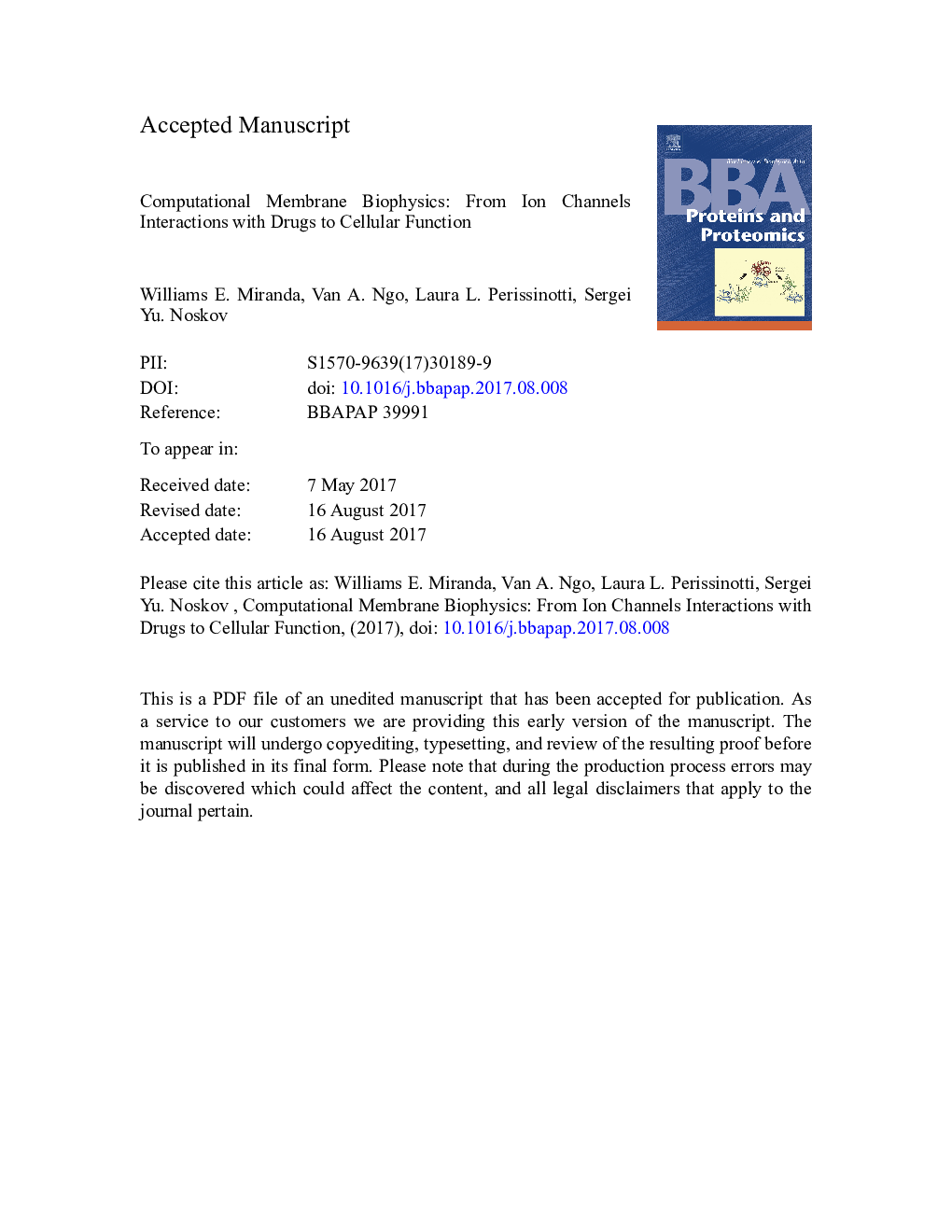| کد مقاله | کد نشریه | سال انتشار | مقاله انگلیسی | نسخه تمام متن |
|---|---|---|---|---|
| 7560771 | 1491445 | 2017 | 37 صفحه PDF | دانلود رایگان |
عنوان انگلیسی مقاله ISI
Computational membrane biophysics: From ion channel interactions with drugs to cellular function
ترجمه فارسی عنوان
بیوفیزیک غشای محاسباتی: از تعامل کانال های یونی با داروها تا عملکرد سلولی
دانلود مقاله + سفارش ترجمه
دانلود مقاله ISI انگلیسی
رایگان برای ایرانیان
کلمات کلیدی
TICAMFPTHCNHMMHERGRMSDIC50MSMPMFnuclear magnetic resonance - رزونانس مغناطیسی هستهایRoot-mean square deviation - انحراف مربع میانگین ریشهReST - باقی ماندهWHAM - بلهNMR - تشدید مغناطیسی هستهای Protein-ligand interactions - تعاملات پروتئین-لیگاندMolecular dynamics - دینامیک ملکولی یا پویایی مولکولیWeighted Histogram Analysis Method - روش تجزیه و تحلیل هیستوگرام وزنMolecular dynamics simulations - شبیه سازی پویایی مولکولیHidden Markov model - مدل پنهان مارکوف Mean first passage time - میانگین زمان گذشت اولElectron microscopy - میکروسکوپ الکترونیhalf-maximal inhibitory concentration - نیمه حداکثر غلظت مهاریaction potential - پتانسیل عمل Potential of mean force - پتانسیل نیروی متوسطIntegral membrane proteins - پروتئین غشایی انتگرالhyperpolarization-activated cyclic nucleotide-gated channel - کانال نوکلئوتیدی غربالگری فعال cyclic hyperpolarization فعال استMELD - گزارش
موضوعات مرتبط
مهندسی و علوم پایه
شیمی
شیمی آنالیزی یا شیمی تجزیه
چکیده انگلیسی
The rapid development of experimental and computational techniques has changed fundamentally our understanding of cellular-membrane transport. The advent of powerful computers and refined force-fields for proteins, ions, and lipids has expanded the applicability of Molecular Dynamics (MD) simulations. A myriad of cellular responses is modulated through the binding of endogenous and exogenous ligands (e.g. neurotransmitters and drugs, respectively) to ion channels. Deciphering the thermodynamics and kinetics of the ligand binding processes to these membrane proteins is at the heart of modern drug development. The ever-increasing computational power has already provided insightful data on the thermodynamics and kinetics of drug-target interactions, free energies of solvation, and partitioning into lipid bilayers for drugs. This review aims to provide a brief summary about modeling approaches to map out crucial binding pathways with intermediate conformations and free-energy surfaces for drug-ion channel binding mechanisms that are responsible for multiple effects on cellular functions. We will discuss post-processing analysis of simulation-generated data, which are then transformed to kinetic models to better understand the molecular underpinning of the experimental observables under the influence of drugs or mutations in ion channels. This review highlights crucial mathematical frameworks and perspectives on bridging different well-established computational techniques to connect the dynamics and timescales from all-atom MD and free energy simulations of ion channels to the physiology of action potentials in cellular models. This article is part of a Special Issue entitled: Biophysics in Canada, edited by Lewis Kay, John Baenziger, Albert Berghuis and Peter Tieleman.
ناشر
Database: Elsevier - ScienceDirect (ساینس دایرکت)
Journal: Biochimica et Biophysica Acta (BBA) - Proteins and Proteomics - Volume 1865, Issue 11, Part B, November 2017, Pages 1643-1653
Journal: Biochimica et Biophysica Acta (BBA) - Proteins and Proteomics - Volume 1865, Issue 11, Part B, November 2017, Pages 1643-1653
نویسندگان
Williams E. Miranda, Van A. Ngo, Laura L. Perissinotti, Sergei Yu. Noskov,
